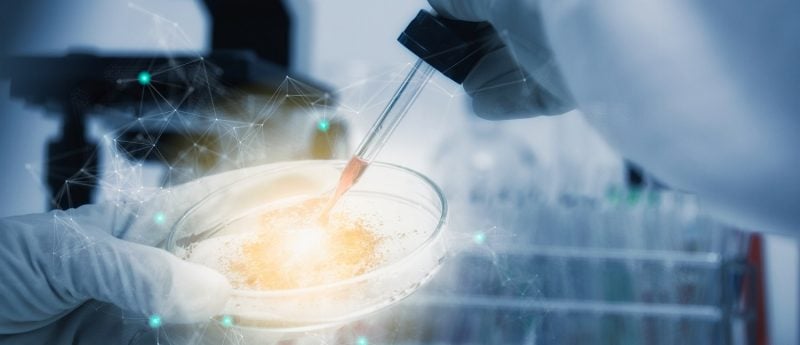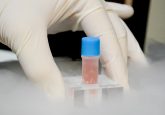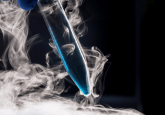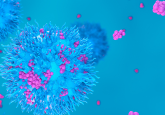Dimethyl sulfoxide: alternatives and improvements for regenerative medicine

In this peek behind the paper, Glyn Stacey, President of the Society for Low Temperature Biology, discusses a recent publication from Regenerative Medicine and the impact of cryopreservation and DMSO on regenerative medicine.
Read Dimethyl sulfoxide: a central player since the dawn of cryobiology, is efficacy balanced by toxicity? in Regenerative Medicine>>
Can you introduce yourself and tell us a little about your role?
My name is Glyn Stacey and I am the current President of the Society for Low Temperature Biology (SLTB; UK) and have had an interest in the cryopreservation of cells for over 30 years. My current work on cryopreservation and the use of DMSO is in the cryopreservation of cell therapies and, in particular, advising on the development of stem cell based clinical studies at the National Stem Cell Resource Center in Beijing, China.
What is your new paper in Regenerative Medicine about?
The review is about the balance between cytotoxicity and cryoprotective effects of dimethyl sulphoxide (DMSO). It proposes 3Rs for decreasing the cytotoxic effects by reducing or removing DMSO in cryopreservation protocols or replacing it with alternative cryoprotectants.
What is DMSO and what is it used for?
DMSO is a chemically active polar molecule which has strong hydrogen bonding capacity with water molecules and is able to rapidly enter cells. During cryopreservation procedures it acts as a cryoprotectant by inhibiting the formation of intracellular ice, which is a significant cause of cell death even in well-established protocols.
What challenges can be associated with the use of DMSO?
DMSO has a wide range of effects on the structure, physiology and molecular biology of cells, some of which can adversely affect cell properties and viability.
How could the use of DMSO impact patients?
Whilst DMSO has been used to save huge numbers of lives over the last 40-50 years, particularly in bone marrow transplant for childhood cancer, some patients transplanted with bone marrow containing DMSO suffer adverse effects. These are predominantly minor adverse reactions but may include more serious problems such as cardiac arrythmias, encephalopathy, renal failure, bronchospasm and neurologic disorders, but these are rare. As described in the review, the removal of DMSO before transplantation of cells can significantly reduce the likelihood of these adverse effects occurring.
What can be done to minimize the impact of DMSO on cells?
The adoption of the reduction and removal approaches described in the review can significantly reduce the occurrence of adverse effect in transplant patients.
What are some of the alternatives to DMSO as a cryoprotectant?
A wide range of alternative cryoprotectants have been explored and these include sugars, sugar alcohols and naturally occurring anti-freeze proteins.
What are the obstacles to these alternatives being fully utilized?
Whilst a number of DMSO-containing cryoprotectant products have been used in clinical trials, alternative cryoprotective agents have yet to be adopted. The biological effects of these alternatives need to be understood thoroughly before moving away from DMSO, given that it has a long history of safe use and that reduction and/or removal approaches can be effective on further reducing any adverse effects. Another problem with alternative cryoprotectants is that manufacturers and suppliers seem reluctant to reveal their composition, which makes studies of their biological activity potentially less informative and prevents robust risk assessment for patient safety.
How do you think our cryopreservation techniques or technology need to adapt?
Regenerative medicines are a complex and increasingly diverse group of medicines in which the active ingredient, the cell type, can respond in unexpected ways to new reagents or conditions. It would be helpful for the field to have a set of well validated model cell systems to test new cryopreservation methods and to develop more sophisticated and quantified multiparametric biological assessments of cell recovery and performance.
This paper results from a meeting of the Society for Low Temperature Biology. What is the Society and what are its aims?
The SLTB is a scientific society which seeks to promote interdisciplinary communication and debate on key issues and technologies in low temperature biology. SLTB also has a strong commitment to support the training and scientific development of scientists coming to work on cryobiological processes and in addition to running annual international scientific meetings, it offers financial support for its members to attend meetings, through the Audrey Smith Awards, and to develop collaborations through its new David Pegg Award, launched in 2019. Information on new online conferences and membership can be found on our website.
Why is greater understanding of the relationships between low temperatures and biological systems important?
Too often cryopreservation protocols are developed by trial and error with methods adapted for other similar cell types, which may work but are not optimal. However, in order to develop a safe and reliable cryopreserved cell-based therapy, it is important to understand the conditions which cells are subjected to during cooling, freezing, storage and thawing, and how these very different processes affect the cells.
Is there anything else you wish to add?
I believe that one of the greatest challenges for the development of effective and safe new cryopreservation procedures is a general lack of understanding of cryobiological processes. There is a need for better education for young scientists and a major goal of the SLTB is to encourage communication on cryobiology between different disciplines and help to educate scientists coming into this area.
How should people contact you if they wish to?
I can be contacted via the SLTB website or at [email protected].
Find out more:
- Read Dimethyl sulfoxide: a central player since the dawn of cryobiology, is efficacy balanced by toxicity? in Regenerative Medicine>>
- Read Stacey et al’s Special Report: Preservation and stability of cell therapy products: recommendations from an expert workshop in Regenerative Medicine>>
Disclaimer
The opinions expressed in this interview are those of the interviewees and do not necessarily reflect the views of RegMedNet or Future Science Group.





